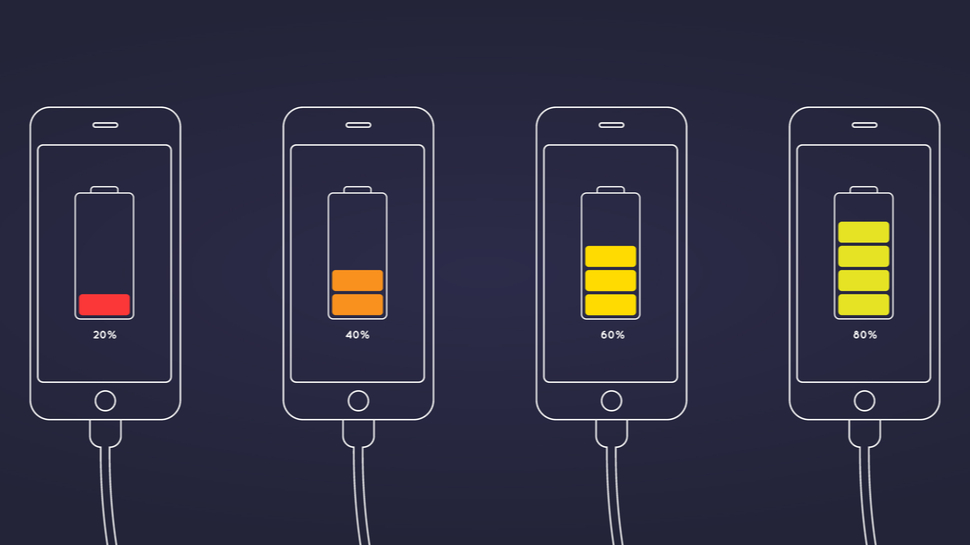Here's why GaN-based chargers are growing in popularity
Interesting in GaN power chargers is at an all-time high

GaN (gallium nitride) power chargers had a significant presence at CES in 2020 – signalling that this year will see widespread interest and adoption in these smaller, faster charging, and more energy efficient devices. Halfway through the year, there is a lot of evidence this is the case. The proliferation in numbers and unprecedented levels of use of the average consumer’s electronic devices has placed market pressure for a more effective and practical design solution from the industry.
With the average American household now containing at least five connected electronic devices and adults alone spending more than six hours per day with digital media, there is a significant increase in expectations around charging capabilities and performance.
GaN technology is uniquely positioned to deliver on this market opportunity – exceeding legacy silicon semiconductor solutions. That’s good news for the innovation reputation of the global market for chargers that is forecasted to reach $25 billion by 2022.
- Here's our list of the best business accessories around
- Working from home: the mouse, monitor, keyboard and router you need
- Check out our list of the best business smartphones out there
Jim Witham is CEO at GaN Systems
There are several trends in the marketplace that demonstrate that GaN chargers are moving from a once niche position to the mainstream standard, while also being positioned to deliver on future advances in device design, performance, and energy efficiency.
Good things come in small packages
As the performance capabilities of devices from phones to laptops increase, so too does their need for increased levels of power. And yet the fact that they are mobile devices places additional pressure on decreasing the size and weight of their power chargers. While using sleek and ultra-light laptops, phones, and handheld gaming devices, users are no longer willing to tolerate heavy, bulky power bricks. Using GaN technology, chargers shrink in both size and weight while still meeting, or exceeding, the high-power needs (even 100W or more) of today’s devices.
GaN technology is more efficient at converting power, which means that less energy is lost to heat. This means that the design of GaN power chargers uses smaller, lower cost components, transformers, and heatsinks than silicon transistor-based chargers, yielding a smaller size charger with the same, or more, capabilities of the bigger ones.
One charger standard replaces all others
Historically, chargers have been unique to each phone, tablet or laptop PC, resulting in those snake nests of cables that we all have in our homes and offices. This year’s advancements in electronics’ charging is about eliminating this clutter and streamlining to a single charger for all of an individual’s devices. This single universal charger is based on the USB-C/USB-PD standard (USB-C is the cable connector system, while USB-PD is a single charging standard that can be used across all USB devices.)
Are you a pro? Subscribe to our newsletter
Sign up to the TechRadar Pro newsletter to get all the top news, opinion, features and guidance your business needs to succeed!
Today, most products ship with the USB-C connector that supports the USB-PD standards. This means that a single sleek charger can handle the charging of a variety of devices, regardless of voltage – from a phone (5V), to a tablet (12V), to a laptop (19V). Not only is this more convenient for the user, but fewer cables means less electronic waste and a healthier planet.
From after-market to in-the-box
Last year, the best way to purchase a small GaN charger was as an aftermarket purchase at a major big box or online retailer. Many of these chargers only delivered a slight 30% decrease in size. In the coming months, there will be a growing abundance of aftermarket GaN chargers that provide a 3 times smaller footprint at a reasonable price.
As these after-market GaN solutions become common, consumer expectations about the out-of-the box experience will change. Laptop, PC and phone manufacturers will respond to this market pressure with chargers that deliver the required higher and faster charging power levels in a smaller, modern device – shipped in the box.
Meeting the power demands of devices in next generation smart homes
Intelligent devices in smart homes are moving from a past focus on primarily transactional capabilities (“play x” or “purchase y”) to those driven by the fulfilment of deeper human needs around well-being, relevance, and meaning.
These new kinds of applications and experiences will be enabled by the marriage of technology advances in voice and facial recognition, AI, and even biometrics that will be found in the next generation of smart speakers, sensors, and devices yet to be invented.
Attaching these increasingly intelligent and often invisible devices to power will become even more challenging. More efficient and smaller GaN-based chargers will be the ideal way to meet the higher power, energy efficiency, and size flexibility design needs of these smart home enablers.
Industrial markets mimic consumers in demands around size, power and simplicity
In devices such as portable test equipment, handheld scanners, mobile displays, industrial equipment, robots, and medical and supply chain applications – the next generation of power chargers will need to respond to the growing demands of the industrial marketplace that parallel those of today’s forward-looking consumers. In increasingly automated factories and warehouses, demand has grown for higher power and faster charging in compact universal chargers to support their higher power applications. GaN technology is an important part of the innovation that is driving the Industry 4.0 movement.
As all of these market forces and trends intersect; it’s an exciting time for the realization of real innovation using GaN technology in the once humble charger in both consumer and industrial markets. The use of GaN transistors in small, lightweight, faster charging multi-device chargers is surging as both in-the-box and aftermarket offerings in 2020 and into 2021 grow exponentially.
- We've built a list of the best business laptops available
Jim Witham is CEO at GaN Systems. He has over 25 years of working experiences and is passionate about technology.
